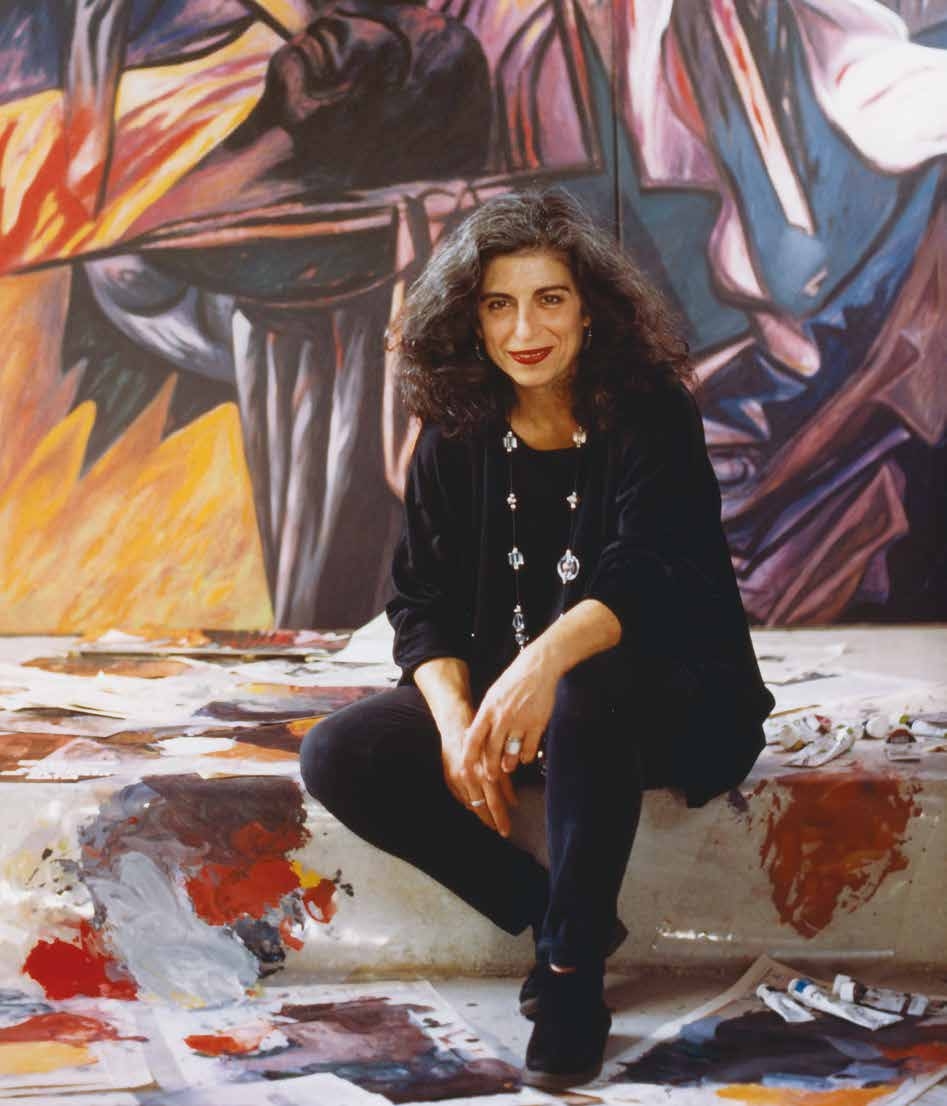Hero Kanakakis
1945 → 1965
Argyro (Hero) Kanakakis was born on June 16, 1945 in Piraeus. Her parents, Mihalis and Anna, came from Amari of Rethymno, Crete. In 1963 she graduated from the 2nd High School for Girls of Piraeus. She attended painting classes at the private school of Panos Sarafianos.
1965 → 1973
She studied printmaking in the workshop of Constantinos Grammatopoulos at the Athens School of Fine Arts (ASFA). She joined the student movement. As a leading member of the Lambrakis Democratic Youth she was elected in the ASFA Students’ Union Governing Committee as well as in the Central Council of the National Student Union of Greece in the period 1965-1967. In the first days of the military coup of April 21, 1967, she was arrested and exiled to the island of Gyaros. She was released after many months. She graduated from ASFA in 1969, having been awarded four distinctions.
She created the cover for the first issue of Anti magazine which was published in May 1972. The magazine was banned by the regime – it was re-issued after the fall of the Junta in 1974. In December 1972 she held her first solo exhibition at the “Ora Cultural Center” of Asadour Baharian. She exhibited 25 compositions in a sharp realistic style and with a strong socio-
political stigma. The exhibition was a success in the anti-dictatorship spirit of the time. In August 1973 she married Vassilis Kapetanyannis in Piraeus and they left for England. The couple settled in a small flat at Cricklewood, North London.
1973 → 1989
Kanakakis attended a postgraduate course in printmaking at Croydon College of Art in the workshop of John Berry. She participated in the group exhibition “Printmaking at Croydon”, hosted at the Grabowski Gallery (June 1974). In 1975 she completed her postgraduate studies at Croydon. From 1975 to 1980 she worked for the Greek Service of the BBC (radio), writing and presenting programs dedicated to the art events of Great Britain. At the same time, she continued to show her works: in December 1974 she exhibited together with Voudouroglou and Katzourakis at “Ora”. In January 1977 she held a solo exhibition at the Galerie “Mouffe”, in Paris. In March, she exhibited again at “Ora” together with Voudouroglou. Two years later, in the same space, she held her second solo exhibition. Her paintings now moved towards magical realism and her allegorical compositions featured horses, ballerinas and imaginary landscapes as her art gradually moved away from politics.
On March 20, 1980, her daughter Constantina was born in London and in 1981 the family moved to a small house in Kilburn, North London. These changes brought about another turn in Kanakakis’ painting: compositions with fabrics, which were worked in a cold, realistic style, dominated thematically. She presented her monumental paintings with fabric themes at “Ora” (February 1985) and at the “Gloria” Gallery of Nicosia, Cyprus (October 1986). Gradually, her painting became more expressionistic, with an emphasis on the naked human body. In 1989, she held a traveling exhibition in Britain with her latest paintings, which were shown successively at Aberdeen Arts Centre (February 16-28) in Aberdeen, Scotland, at Hanover Galleries (March 8-18) in Liverpool and finally, in Heifer Gallery, London. In April she settled with her family in Athens for good.
1990 → 1997
In Athens she began to teach the course of basic design at the Vakalo College, work that constituted, together with painting, her main professional activity in the following years. The exhibition “Hero Kanakaki: Visual Environment” was staged at the International Center for Visual Arts “Aenaon”, in Athens in March 1990. In November 1991 her exhibition “natural and
human landscapes” opened at the “Astrolavos” Art Gallery in Piraeus. It was the starting point of her stylistic shift towards a more abstract and expressionistic style. She exhibited the “non-
existent landscapes” at “Ariadni” Art Space in Heraklion, Crete (March 1992), and at “Kreonidis” Art Gallery in Thessaloniki (April 1993).
In June 1994 “K Gallery” of Ritsa Kyriakou in London hosted her solo exhibition titled “Fragments of Dream and Reality”. Twelve mega compositions were presented which were distinguished by their fragmentary nature, bright colors and expressionistic character. They marked the stylistic maturation of the painter, through a new, violent in color and design, monumental language. In March 1995 the exhibition was moved to “Agathi” Art Gallery in Athens. In the same year, as part of the second Argos Festival (June 23-30), she presented the visual installation “Cassandra and her executioners”, a series of large charcoal drawings in the same vain, at the Barracks of Kapodistrias. The painter was now exploring the possibilities of the monumental, expressionistic language through visual interventions in the space. Thus, at the third Argos Festival (June 1996), she undertook, with the cooperation of her students from the Vakalo College, the visual transformation of the Koklas Primary School.
Hero Kanakakis died suddenly on September 14th 1997 at her home in Athens due to a stroke. She was only 52 years old. Eight months after her death, “Nees Morfes” Gallery organized an exhibition titled “Hero Kanakaki 1945-1997” (April 28 – May 17 1998). A large section of the black and white drawings of “Cassandra” was on display. The day before the opening, an event was held in her memory at the Vakalo College in Athens.




